Deep clean dishwasher quickly? Sounds like a dream, right? Let’s face it, our dishwashers are the unsung heroes of the kitchen, tirelessly scrubbing away at our dirty dishes. But who cleans the cleaner? Over time, food particles, grease, and hard water deposits build up, leaving your dishwasher smelling funky and performing less efficiently.
Think of it like this: for centuries, people relied on elbow grease and hot water to wash dishes. The dishwasher, a relatively modern invention, freed up countless hours. But even this marvel of modern convenience needs a little TLC to keep running smoothly. Ignoring the need to deep clean your dishwasher can lead to clogged spray arms, reduced cleaning power, and even costly repairs down the line.
That’s where this DIY guide comes in! I’m going to share my favorite, super-effective tricks to deep clean dishwasher quickly and easily, using ingredients you probably already have in your pantry. We’ll banish those lingering odors, blast away stubborn grime, and restore your dishwasher to its sparkling best. Get ready to say goodbye to cloudy glasses and hello to a fresh, clean dishwasher that works like new!
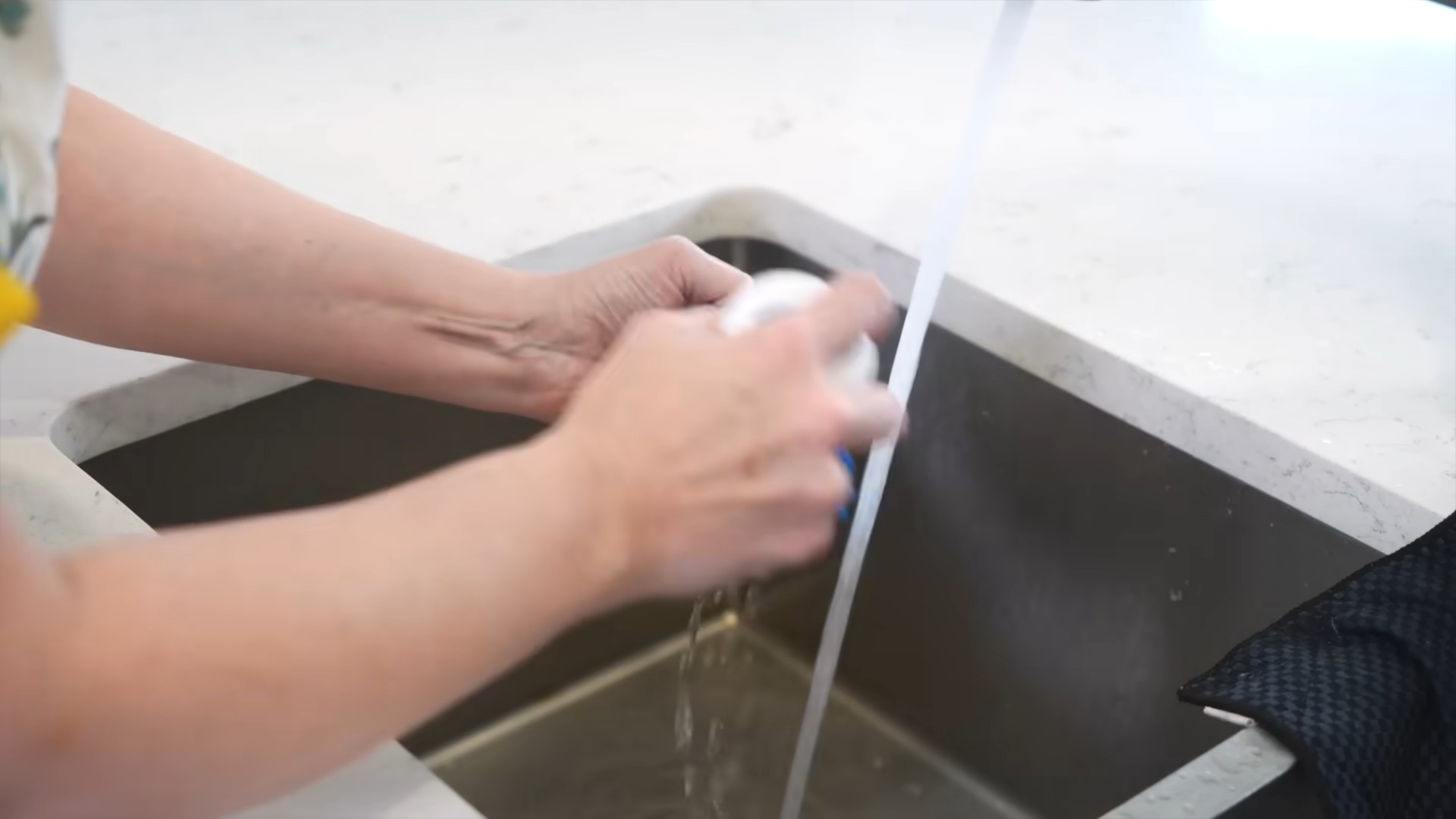
DIY Deep Clean: Revive Your Dishwasher in a Flash!
Okay, let’s face it, our dishwashers work hard. They tirelessly scrub away at our dirty dishes, but who cleans the cleaner? Over time, grease, food particles, and hard water deposits build up, making your dishwasher less effective and, frankly, a bit smelly. But don’t worry, I’m going to show you how to deep clean your dishwasher quickly and easily, using mostly things you probably already have in your pantry!
What You’ll Need:
Before we get started, let’s gather our supplies. This is a pretty straightforward process, so the list is short and sweet:
* White Vinegar
* Baking Soda
* Dish Soap (optional, but I like to use it!)
* A Toothbrush (an old one, of course!)
* A Damp Cloth or Sponge
* A Screwdriver (possibly, depending on your dishwasher filter)
* Rubber Gloves (optional, but recommended if you have sensitive skin)
Why Deep Clean Your Dishwasher?
You might be thinking, “Is this really necessary?” And the answer is a resounding YES! Here’s why:
* Improved Cleaning Performance: A clean dishwasher means cleaner dishes. Buildup can clog spray arms and reduce water pressure, leaving your dishes less than sparkling.
* Eliminates Odors: That funky smell coming from your dishwasher? It’s likely due to trapped food and bacteria. Deep cleaning gets rid of the source of the odor.
* Extends Dishwasher Lifespan: Regular cleaning prevents corrosion and damage to internal components, helping your dishwasher last longer.
* Better Hygiene: A clean dishwasher is a more hygienic dishwasher. You don’t want to be washing your dishes in a breeding ground for bacteria!
Step-by-Step Guide to a Sparkling Clean Dishwasher
Alright, let’s get down to business! Here’s how to deep clean your dishwasher like a pro:
Phase 1: Emptying and Inspecting
1. Empty the Dishwasher Completely: This seems obvious, but make sure there are no dishes, utensils, or anything else inside. We need a blank canvas to work with.
2. Inspect the Interior: Take a good look inside your dishwasher. Pay attention to the spray arms, the filter, and the door seals. Note any areas with visible buildup or grime. This will help you focus your cleaning efforts.
Phase 2: Cleaning the Filter
This is arguably the most important part of the process. A clogged filter is a major culprit for poor dishwasher performance.
1. Locate the Filter: Your dishwasher filter is usually located at the bottom of the dishwasher, near the spray arm. It might be a cylindrical filter or a flat screen filter. Consult your dishwasher’s manual if you’re unsure where to find it.
2. Remove the Filter: Most filters can be removed by twisting them or unscrewing a retaining ring. Again, refer to your manual for specific instructions. Some filters might require a screwdriver to remove.
3. Rinse the Filter: Once you’ve removed the filter, rinse it thoroughly under hot running water. Use your fingers or the toothbrush to scrub away any visible food particles or debris.
4. Soak the Filter (Optional): For heavily soiled filters, you can soak them in a solution of hot water and dish soap for about 30 minutes before rinsing. This will help loosen stubborn grime.
5. Reinstall the Filter: After cleaning, make sure the filter is completely clean and then reinstall it securely. Ensure it’s properly locked into place.
Phase 3: Cleaning the Spray Arms
Clogged spray arms can significantly reduce your dishwasher’s cleaning power.
1. Locate the Spray Arms: Your dishwasher will have at least one spray arm, usually located at the bottom and sometimes at the top.
2. Remove the Spray Arms: Most spray arms can be easily removed by unscrewing them or simply pulling them off. Check your dishwasher’s manual for specific instructions.
3. Inspect the Spray Arm Nozzles: Examine the spray arm nozzles for any clogs. You’ll likely find small holes where the water sprays out.
4. Clean the Nozzles: Use a toothpick, a thin wire, or a needle to carefully clear any clogs in the nozzles. You can also run the spray arms under hot water to help dislodge debris.
5. Rinse the Spray Arms: Rinse the spray arms thoroughly under hot water to remove any remaining debris.
6. Reinstall the Spray Arms: Once the spray arms are clean and clear, reinstall them securely in their original positions.
Phase 4: Cleaning the Dishwasher Interior
Now, let’s tackle the inside of the dishwasher itself.
1. Wipe Down the Interior: Use a damp cloth or sponge to wipe down the interior walls, door, and racks of the dishwasher. Pay special attention to any areas with visible stains or buildup.
2. Clean the Door Seals: The door seals are often overlooked, but they can harbor mold and mildew. Use a damp cloth or toothbrush to clean the seals thoroughly.
3. Vinegar Steam Clean: This is where the magic happens! Place a dishwasher-safe cup or bowl filled with one cup of white vinegar on the top rack of the empty dishwasher.
4. Run a Hot Water Cycle: Close the dishwasher and run a normal hot water cycle. The vinegar will help to dissolve grease, grime, and hard water deposits.
5. Baking Soda Freshening: After the vinegar cycle is complete, sprinkle one cup of baking soda on the bottom of the dishwasher.
6. Run a Short Hot Water Cycle: Run a short hot water cycle to further freshen and deodorize the dishwasher.
Phase 5: Final Touches
1. Wipe Down the Exterior: Use a damp cloth to wipe down the exterior of the dishwasher, including the door, control panel, and handle.
2. Leave the Door Ajar: After the final cycle is complete, leave the dishwasher door ajar to allow it to air dry completely. This will help prevent the growth of mold and mildew.
Tips and Tricks for Maintaining a Clean Dishwasher
Now that you’ve deep cleaned your dishwasher, here are a few tips to keep it sparkling clean in the future:
* Scrape Dishes Before Loading: This is a no-brainer, but it’s worth repeating. Scrape off any large food particles before loading your dishes into the dishwasher.
* Run the Dishwasher Regularly: Even if you don’t have a full load, run the dishwasher at least once a week to prevent food from drying and hardening.
* Use a Dishwasher Cleaner: Consider using a commercial dishwasher cleaner once a month to help prevent buildup. Follow the instructions on the product label.
* Check and Clean the Filter Regularly: Make it a habit to check and clean the dishwasher filter every few weeks.
* Run a Vinegar Rinse Regularly: Run a vinegar rinse cycle once a month to help prevent hard water deposits.
* Don’t Overload the Dishwasher: Overloading the dishwasher can prevent proper cleaning and lead to buildup.
* Use the Correct Amount of Detergent: Using too much detergent can leave a residue on your dishes and in the dishwasher. Follow the instructions on the detergent package.
Troubleshooting Common Dishwasher Problems
Sometimes, even with regular cleaning, you might encounter some common dishwasher problems. Here are a few troubleshooting tips:
* Dishes Not Getting Clean: This could be due to a clogged filter, clogged spray arms, low water pressure, or using the wrong detergent.
* Dishwasher Not Draining: This could be due to a clogged drain hose, a clogged drain pump, or a faulty drain valve.
* Dishwasher Leaking: This could be due to a damaged door seal, a loose connection, or a faulty water inlet valve.
* Dishwasher Smells Bad: This is usually due to trapped food particles and bacteria. Deep cleaning the dishwasher should solve this problem.
If you’re unable to resolve a dishwasher problem yourself, it’s best to consult a qualified appliance repair technician.
Final Thoughts
And there you have it! A sparkling clean dishwasher that’s ready to tackle your dirtiest dishes. By following these simple steps and tips, you can keep your dishwasher running smoothly and efficiently for years to come. Happy cleaning!
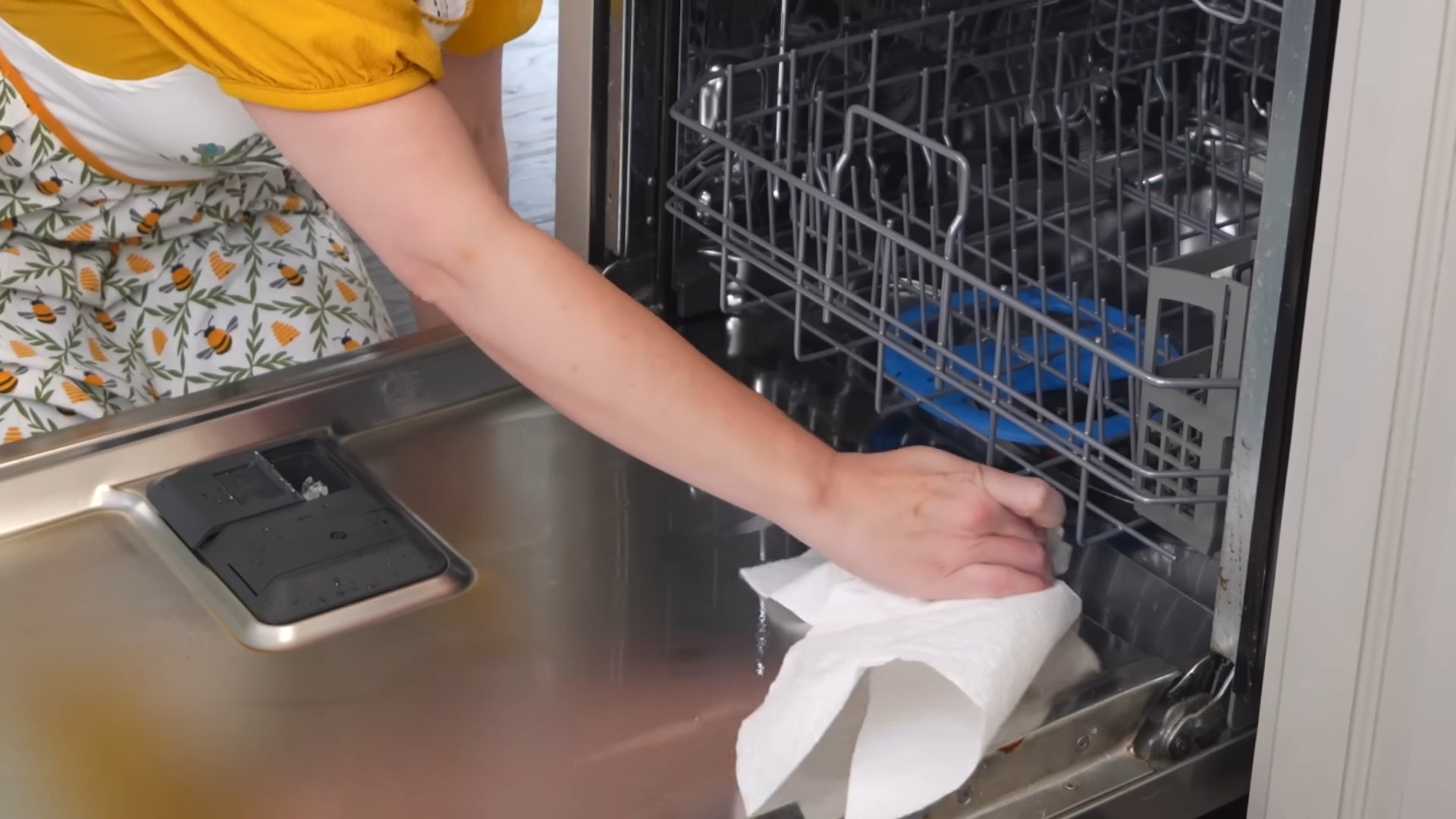
Conclusion
So, there you have it! A simple, effective, and surprisingly satisfying way to deep clean your dishwasher quickly. Forget those expensive, chemical-laden dishwasher cleaners that promise the world but often fall short. This DIY trick, using ingredients you likely already have in your pantry, is not only budget-friendly but also environmentally conscious.
Why is this a must-try? Because a clean dishwasher is a happy dishwasher, and a happy dishwasher means sparkling clean dishes. A build-up of food particles, grease, and hard water deposits can significantly impact your dishwasher’s performance, leading to cloudy glassware, lingering odors, and even potential mechanical issues down the line. By regularly deep cleaning your dishwasher, you’re not just improving its cleaning power; you’re also extending its lifespan and saving yourself money on costly repairs or replacements.
But the benefits don’t stop there. This method is incredibly quick and easy. No more spending hours scrubbing and soaking. With just a few simple steps, you can have your dishwasher looking and smelling like new in no time. Plus, the natural ingredients used in this DIY approach are gentler on your dishwasher’s internal components than harsh chemical cleaners, preventing corrosion and damage.
Looking for variations? You can add a few drops of your favorite essential oil, like lemon or tea tree, to the vinegar for an extra boost of freshness. If you have particularly stubborn hard water stains, you can try using a stronger concentration of vinegar or adding a tablespoon of citric acid to the baking soda paste. For dishwashers with a stainless steel interior, you can use a microfiber cloth to wipe down the inside after the cleaning cycle for an extra shine.
We’re confident that once you try this DIY deep clean dishwasher quickly method, you’ll be amazed by the results. It’s a game-changer for maintaining a clean and efficient kitchen. Don’t just take our word for it, though. Give it a try and see for yourself!
We encourage you to share your experience with us in the comments below. Let us know how this DIY trick worked for you, any variations you tried, and any tips you have to share with other readers. Your feedback is invaluable and helps us continue to provide you with the best possible cleaning solutions. So, roll up your sleeves, gather your supplies, and get ready to experience the joy of a sparkling clean dishwasher!
Frequently Asked Questions
1. How often should I deep clean my dishwasher?
The frequency of deep cleaning depends on how often you use your dishwasher and the hardness of your water. As a general rule of thumb, aim to deep clean your dishwasher at least once a month. If you have hard water or use your dishwasher frequently, you may need to clean it more often, perhaps every two weeks. Signs that your dishwasher needs cleaning include cloudy glassware, lingering odors, food particles left on dishes, and decreased cleaning performance. Regular maintenance will prevent build-up and keep your dishwasher running smoothly.
2. What kind of vinegar should I use?
Plain white vinegar is the best choice for cleaning your dishwasher. It’s acidic enough to dissolve grease, grime, and hard water deposits without being harmful to your dishwasher’s components. Avoid using other types of vinegar, such as apple cider vinegar or balsamic vinegar, as they may contain sugars or other additives that could leave a sticky residue. White vinegar is readily available and inexpensive, making it the perfect choice for this DIY cleaning method.
3. Can I use baking soda and vinegar together in the same step?
While baking soda and vinegar are both excellent cleaning agents, it’s generally not recommended to mix them directly in the dishwasher. When combined, they create a chemical reaction that produces carbon dioxide and water. While this reaction is safe, it can neutralize the cleaning power of both ingredients. It’s best to use them separately, as outlined in the instructions, to maximize their effectiveness. The baking soda acts as a gentle abrasive to scrub away stubborn stains, while the vinegar dissolves grease and grime.
4. Is this DIY cleaning method safe for all types of dishwashers?
This DIY cleaning method is generally safe for most types of dishwashers, including those with stainless steel interiors. However, it’s always a good idea to consult your dishwasher’s owner’s manual before trying any new cleaning method. Some manufacturers may have specific recommendations or warnings regarding the use of certain cleaning agents. If you’re unsure, you can test the method on a small, inconspicuous area of your dishwasher first to ensure that it doesn’t cause any damage.
5. What if my dishwasher still smells after cleaning?
If your dishwasher still has a lingering odor after cleaning, there are a few things you can try. First, make sure that you’ve thoroughly cleaned the filter and removed any trapped food particles. You can also try running an empty cycle with a cup of lemon juice or a few drops of essential oil, such as lemon or tea tree, to freshen the scent. If the odor persists, it could be a sign of a more serious problem, such as a clogged drain or a malfunctioning component. In this case, it’s best to consult a qualified appliance repair technician.
6. Can I use this method to clean my dishwasher’s exterior?
Yes, you can use a diluted vinegar solution to clean the exterior of your dishwasher. Simply mix equal parts white vinegar and water in a spray bottle and spray the solution onto the exterior surfaces. Wipe clean with a damp cloth. For stainless steel exteriors, be sure to wipe in the direction of the grain to avoid streaks. Avoid spraying the solution directly onto the control panel or any electrical components.
7. What are some other ways to maintain my dishwasher?
In addition to deep cleaning, there are several other things you can do to maintain your dishwasher and keep it running smoothly. Regularly clean the filter to remove trapped food particles. Scrape food off dishes before loading them into the dishwasher. Avoid overloading the dishwasher, as this can prevent proper cleaning. Use the correct amount of detergent and rinse aid. And periodically check the spray arms to make sure they’re not clogged. By following these simple tips, you can extend the life of your dishwasher and ensure that it continues to provide you with sparkling clean dishes for years to come.

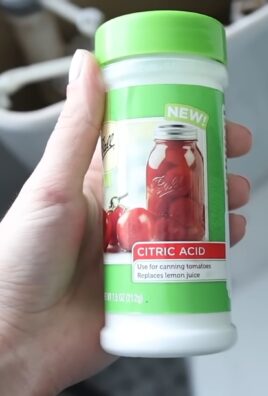
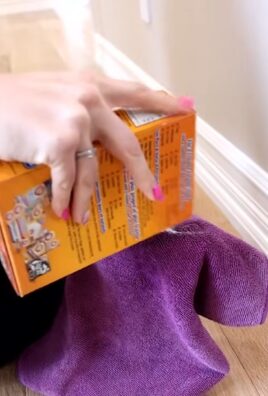
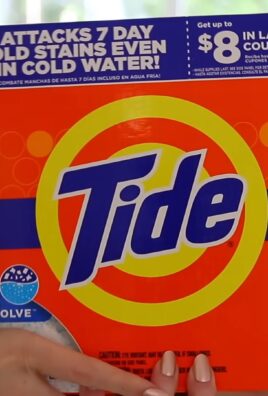
Leave a Comment